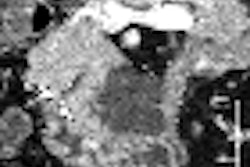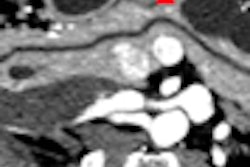The American Gastroenterological Association (AGA) has published new guidelines for managing asymptomatic neoplastic pancreatic cysts detected incidentally during CT or MRI scans. The guidelines retreat from previous advice to follow up these lesions more aggressively, according to an article published in Gastroenterology.
The new AGA guidelines forego invasive workup, surveillance, or surgery for most patients, limiting aggressive follow-up to patients with detected cysts that have more high-risk features. Lead author Dr. Santhi Swaroop Vege, from the Mayo Clinic in Rochester, MN, and colleagues suggest that the new approach could help minimize both harms and costs, while identifying the patients who would benefit from workup (Gastroenterology, April 2015, Vol. 148:4, pp. 819-822).
Ideally, physicians would have an accurate way to determine which cysts are the most dangerous; however, common diagnostic tools such as CT, MRI, and endoscopic ultrasound with fine-needle aspiration cytology have only mediocre sensitivity rates, they wrote. Studies in the literature suggest that the benefits of working up small neoplastic pancreatic cysts are either minimal or not well-demonstrated, leading to the present recommendation to scale back workups in most patients.
In a letter published online March 25 in the Annals of Internal Medicine, Dr. Russell Harris wrote that the guidelines are needed due to rapid growth in the number of highly sensitive imaging studies that are detecting more and more incidental lesions, which are being followed up. The new guidelines are likely to save significant time and money and prevent potential patient harm, he wrote.
According to Harris, before aggressive follow-up begins after the detection of such lesions, physicians should ask themselves a series of questions, including the following:
- How often does a lesion of the type detected lead to a life-threatening condition for the patient?
- How do various imaging exams help physicians select the patients most likely to benefit from intervention, and what does each diagnostic procedure or test add to the available information?
- Would surgery and/or postsurgical surveillance reduce mortality further?
- Would the benefit of surgery outweigh the potential harms and costs of intervention?
In the literature, the frequency of invasive cancer in studies of highly selected surgical cases ranges from 0% to 32%, while the rate of progression to life-threatening cancer is unknown. Indirect evidence suggests that this progression rate is low. Endoscopic ultrasound with fine-needle aspiration can sometimes detect dangerous features, but it is highly operator-dependent and rarely adds to diagnostic accuracy, he wrote.
There is little evidence showing that imaging surveillance can help identify cysts with progressive cancer, and there is no "credible evidence to tell us whether resection of the lesions found at surgery reduces pancreatic cancer mortality," Harris wrote.
A technical review found that pancreatic cyst resection had a pooled mortality rate of about 2% and a serious complication rate (bleeding, perforation, or infection) of about 30%, he noted, adding that physical harm can also occur from overdiagnosis and unnecessary treatment.
"The AGA deserves congratulations for its bold recommendations," Harris concluded. "In today's medical atmosphere, it is difficult for any group to recommend less aggressive care. Until better evidence is available, we will not know if the AGA guidelines provide greater value than previous ones, but they thoughtfully adopted a value framework. To get value from new technology, we have to learn to use it with the restraint necessary to minimize harms and costs while preserving benefit."




















